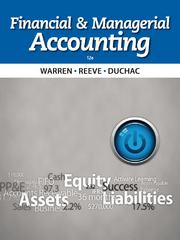Financial Management WEEK 12 Data Case 1 Lecturer: Wan-Chien Chiu Estimate Free Cash Flows and Evaluate NPV of Investment Imagine you have just been hired by Hewlett-Packard (HP) in its capital budgeting division. Your first assignment is to determine the net cash flows and NPV of a proposed new type of portable computer system similar in size to an iPhone, but which has the operating power of a high-end desktop system. Development of the new system will initially require an investment equal to 10% of net property, plant, and equipment (PPE) for the fiscal year ended October 31, 2013. The product is expected to have a life of five years. First-year revenues for the new product are expected to be 3% of total revenue for HP's fiscal year ended October 31, 2013. The new product's revenues are expected to grow at 15% for the second year, then 10% for the third, and 5% annually for the final two years of the expected life of the project. Your boss has indicated that the operating costs and net working capital requirements are similar to the rest of the company's products and that depreciation is straight- line for capital budgeting purposes. Welcome to the "real world." Since your boss hasn't been much help, here are some tips to guide your analysis: 1. You already have the firm's financial statements. 2. You are now ready to determine the free cash flow. Compute the free cash flow for each year using Eq. 9.6 from the chapter: Free Cash Flow Unlevered Net Income Free Cash Flow = ( Revenues - Costs - Depreciation ) x (1 - Tax Rate ) + Depreciation - CapEx - Change in NWC Net Working Capital = Current Assets - Current Liabilities = Cash + Inventory + Receivables - Payables Set up the timeline and computation of the free cash flow in separate, contiguous columns for each year of the project life. Be sure to make outflows negative and inflows positive. a. Assume that the project's profitability will be similar to HP's existing projects in 2013 and estimate (Revenues - Costs) each year is the 7% of the firm's revenue on that year. b. Determine the annual depreciation by assuming the firm depreciates these assets by the straight-line method over a 5-year life. c. Determine the firm's tax rate by dividing the firm's income taxes by its income before tax in 2013. d. Calculate the net working capital required each year by assuming that the level of NWC will be a constant percentage of the project's sales. Use the firm's 2013 NWC/Sales to estimate the required percentage. (Use only accounts receivable, accounts payable, and inventory to measure working capital. Other components of current assets and liabilities are harder to interpret and are not necessarily reflective of the project's required NWC-e.g., the firm's cash holdings.) e. To determine the free cash flow, calculate the additional capital investment and the change in net working capital each year. 3. Determine the IRR of the project and the NPV of the project at a cost of capital of 12%







